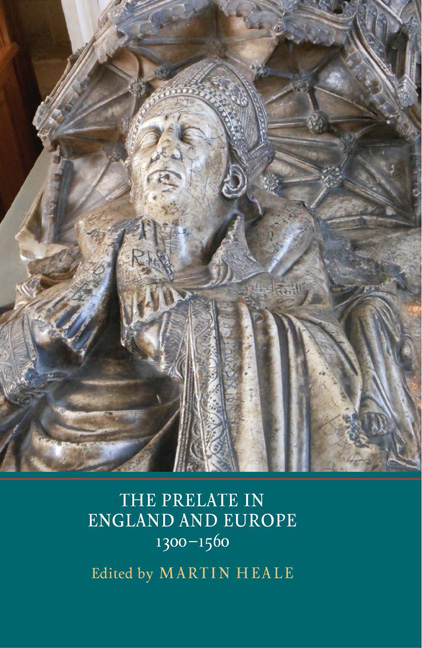Book contents
- Frontmatter
- CONTENTS
- List of Illustrations
- List of Contributors
- Preface and Acknowledgements
- List of Abbreviations
- Introduction
- Part I Prelates and Power
- Part II Patronage and Learning
- Part III Identity and Display
- Part IV Attitudes towards Prelacy
- Monastic Attitudes to Abbatial Magnificence in Late Medieval England
- Lollard Views on Prelates
- Index of People and Places
- Index of Subjects
- YORK MEDIEVAL PRESS: PUBLICATIONS
Monastic Attitudes to Abbatial Magnificence in Late Medieval England
from Part IV - Attitudes towards Prelacy
Published online by Cambridge University Press: 05 November 2014
- Frontmatter
- CONTENTS
- List of Illustrations
- List of Contributors
- Preface and Acknowledgements
- List of Abbreviations
- Introduction
- Part I Prelates and Power
- Part II Patronage and Learning
- Part III Identity and Display
- Part IV Attitudes towards Prelacy
- Monastic Attitudes to Abbatial Magnificence in Late Medieval England
- Lollard Views on Prelates
- Index of People and Places
- Index of Subjects
- YORK MEDIEVAL PRESS: PUBLICATIONS
Summary
Abbatial display in late medieval England
In his chronicle on the early history of St Augustine's Abbey, Canterbury, written c. 1400, Thomas Elmham contrasted the first seven saintly heads of his monastery with the superiors of his own day. These early abbots, he considers, observed the Benedictine Rule wholeheartedly and, unlike modern-day superiors, ‘did not seek chief salutations in the market-place, chief places at feasts, and chief seats in assemblies, things suitable only to the dignity of pontiffs, to the mitre, the ring and the staff’. Not only were contemporary abbots preoccupied with their own dignity and status, Elmham complains, but they had also distanced themselves from their communities and from the everyday rigours and basic precepts of the monastic life:
From their subjects they exact the rule severely, while they themselves, glorying in riches and luxuries and honours, supply but a miserable pittance of victuals to those who bear the burden and heat of the day, putting on the shoulders of those subject to them burdens impossible to bear, but unwilling to touch them with their own fingers. Such, without doubt, are the majority of those who govern the territory of the monastic religion, which, for their shortcomings, lies untilled, choked with the thorns and brambles of their vices … To their harshness and to their slackness can be put down the fact that the mortar of the wall of religion is loosened, so that scarce one stone is left upon another.
- Type
- Chapter
- Information
- The Prelate in England and Europe, 1300–1560 , pp. 261 - 276Publisher: Boydell & BrewerPrint publication year: 2014



